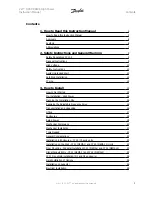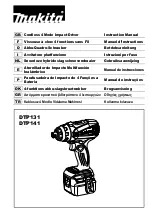
8
1248-877
Always remove the plug from the power source before installing or removing
any socket or accessory.
Be ready for components to shift when removing any fastener. The speed of
the fastener removal could cause unexpected shifting of the components.
Hold the tool by the insulated gripping surfaces when performing an opera-
tion where the cutting tool may contact hidden wiring or its own cord. Contact
with a “live” wire will make exposed metal parts “live” and shock the operator.
EXENSION CORD SAFETY
WARNING: Keep the extension cord clear of the work area.
Position the
cord so it will not get caught on the workpiece, tools or any other obstructions
while you are working with the power tool.
Make sure any extension cord used with this tool is in good condition. When using
an extension cord, be sure to use one of heavy enough gauge to carry the current
the tool will draw. An undersized cord will cause a drop in line voltage resulting in
loss of power and overheating.
The table below shows the correct size to use according to cord length and
nameplate ampere rating. If in doubt, use the next heavier gauge. The smaller the
gauge number the heavier the cord.
Be sure your extension cord is properly wired and in good condition. Always
replace a damaged extension cord or have it repaired by a qualified electrician
before using it. Protect your extension cord from sharp objects, excessive heat and
damp or wet areas.
Use a separate electrical circuit for your power tools. This circuit must not be less
than 14-gauge wire and should be protected with either a 15A time delayed fuse
or circuit breaker. Before connecting the power tool to the power source, make
sure the switch is in the OFF position and that the voltage of the power source is
the same as the voltage that is indicated on the tool's nameplate. Running at lower
voltage will damage the motor.
Amperage rating
Summary of Contents for 1248-877
Page 17: ...16 1248 877 EXPLODED VIEW ...







































